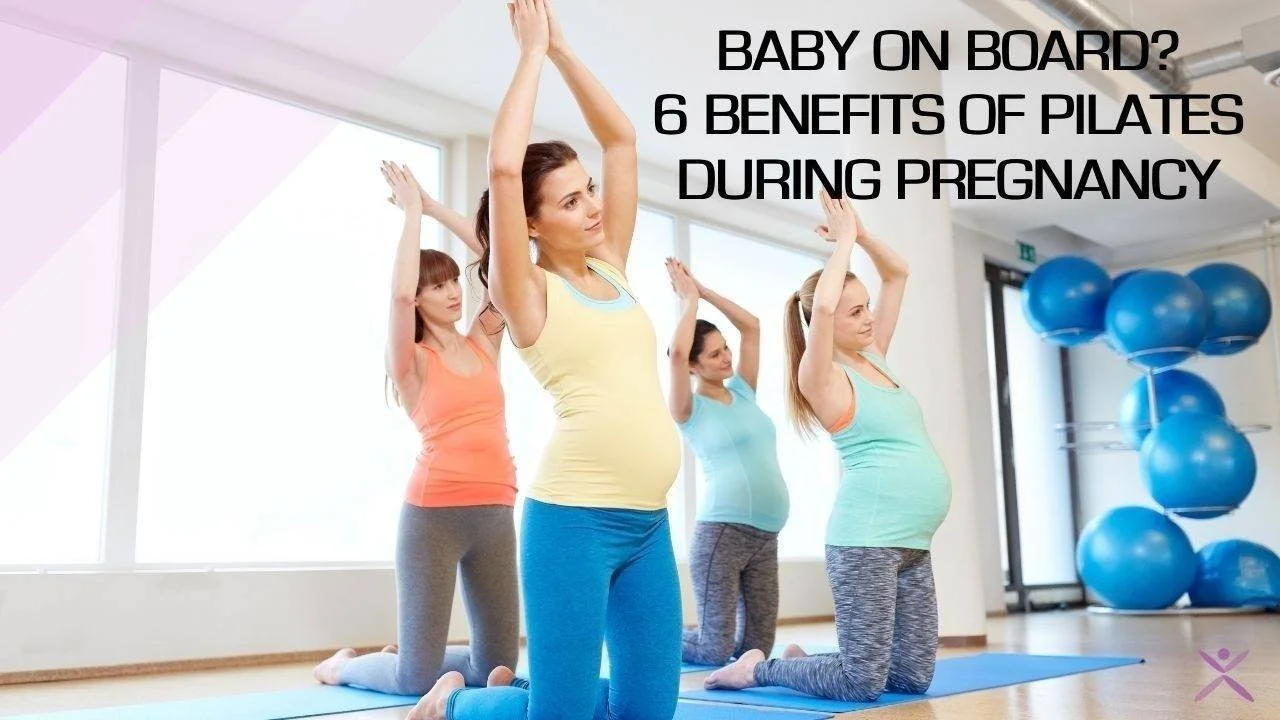Baby on board? 6 Benefits of Pilates during pregnancy
Since Pilates is a low impact workout that increases flexibility, alignment and strength, it’s a wonderful and safe exercise option for mothers to be.
It is ideal for pregnancy because of it’s gentleness on the body while reducing most unwanted side effects of the pregnancy including back pain, poor posture, loss of muscle tone, poor sleep, edema, collapsing foot arches, and ultimately helps with labor and delivery. It can also help boost your mood and energy level too! It is a very adaptable form of exercise that can be modified as your body and abilities change throughout the pregnancy.
Here are a few specific areas of focus that Pilates will target for pregnant woman
1. Pilates incorporates pelvic floor work into its workouts.
The pelvic is a group of muscles that work to keep organs, and your baby (among other things), inside the body instead of falling out from the force of gravity. Not only do pregnant women need to strengthen the pelvic floor muscles in order to counter the increasing weight put on them with the growing baby, but they also need to learn how to turn them off/ relax them, which is important to actually let the baby out during delivery. A strong pelvic floor will also help the body return to its pre pregnancy state more quickly, and also prevents incontinence.
2. Focusing on deep core/abdominal strength
Your transverse abdominal muscles are located deep in your abdominal cavity. They act like a corset, supporting your internal organs and are essential for good posture. Strengthening these muscles before and during pregnancy can relieve pressure on your back and helps support your baby weight. Also a specific focus on the obliques that help cradle the growing uterus are important as well.
3. Breathing
The full, deep breathing that is learned and practiced during Pilates sessions helps to maintain the transverses abdominus connection by pulling the belly in during the most pilates exercises. This provides good core support to the back and the rest of the body. Certain exercises help to develop increased flexibility in the intercostal muscles which will help allow the ribs to move when the baby starts to grow and take up the extra space in the abdominal cavity. Breathing properly also will help during labor and delivery!
4. Upper back and arm strength
These are very important for pregnant mothers in anticipation of holding their baby which rapidly grows into a larger, heavier baby. During pregnancy there is increased breast mass and weight in the front of the body, and women often times become kyphotic, with a forward leaning posture. Once the baby is born and nursing, the hunched over posture worsens. Specific exercises to target the upper back muscles will help counter this natural tendency and prevent future pain/injuries.
5. Maintaining posture and limiting imbalances
As the baby grows and the body tries to adapt to make more room, posture and alignment will be compromised. Pilates can help to strengthen the stabilizing muscles, especially around the hips and pelvis to ensure less back discomfort, to help with balance issues, and to ensure there are no permanent imbalances postpartum.
6. Maintaining flexibility
During pregnancy the hip flexors, low back, chest, and neck extensors can become really tight, and thus the opposing muscles will become weak. Pilates can address these issues and help to minimize these changes.
Taking a private session or a specified prenatal class will help keep you safe and avoid any movements that can be harmful to you and your baby. A few for example are:
A few things to avoid
1. Avoid exercising on your back once you’re in your second and third trimester. The weight of your uterus can press on the vena cava, which is the main vein that carries blood from your lower body to your heart. Compressing it can interfere with the circulation of both you and baby.
2. Jumping, using the jump board
3. Lying on your stomach
4. Excessive rectus abdominal work into your third trimester… especially ‘crunches’ where you are lifting your head forward and curving the spine into flexion. This can create a diastasis recti where there is an over stretching or even a split in the line alba (the connective tissue that connects the two sides of the abdominals together). This can create weakness in the support system for the back and organs, causing back pain, and also leaving you with a look of a “mummy tummy” after birth
5. Inversions; when your pelvis is over your heart
6. Over stretching: From the start of pregnancy the mother’s body produces a hormone called Relaxin which is responsible for loosening the ligaments in her body in preparation for the baby’s birth through the pelvic cavity. Relaxin also loosens ligaments in the entire body, therefore woman have a new found flexibility which is not encouraged because they may overstretch the ligaments which may lead to injury and permanent damage. So while it is encouraged and for the pregnant woman to stretch and maintain flexibility, they should not work for developing more flexibility or use any new extreme ranges
So if you, your wife, or anyone you know is pregnant, please let them know about this wonderful way to be healthy and exercise during pregnancy. We have a great team at PITG that can guide you through your 9 months, even up to the week before giving birth!
It’s certainly been helping me during my first pregnancy journey!
In good health,
Jackie

